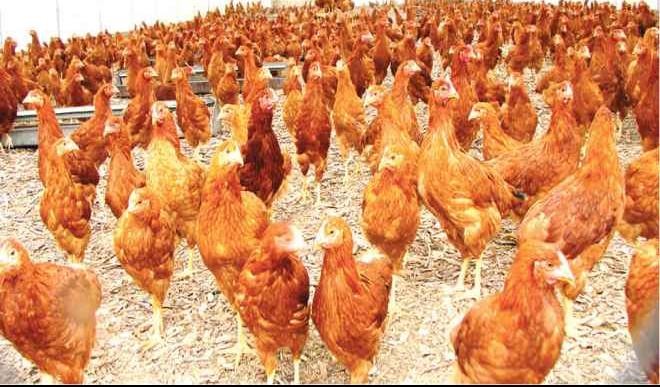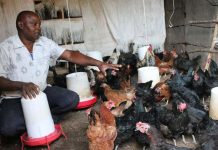Egg breakage by layer chickens is something most poultry farmers are familiar with.
An expert, Musa Abdulrahman of National Animal Production Research Institute (NAPRI), noted that the trend is an acquired behaviour which doesn’t necessarily have a causative agent, adding however that a number of reasons could lead to it.
Abdulrahman pointed out that the behaviour is not seasonal and that it is more peculiar with layer birds because their nests are around them.
He suggested that part of the reasons for this is congestion, otherwise known as high stocking density of the birds which may lead to cannibalism and also egg breaking.
“If the chickens are overcrowded and there is no space for them, they try to create space for themselves so they peck on other chickens and on eggs around to create space.
“As a result of pecking on eggs, they break it. Mostly they are attracted to bright colours; red, yellow and green. So on breaking the eggs, the layers feed on the albumen (egg white) thinking its water before feeding on the yolk,” he explained.
The expert stated also that a point to note is that once they acquire the behaviour of egg breaking, it continues, adding that egg breaking at times is as a result of blood stains on the egg or when the eggs are shell-less which attract the chickens to it.
Additionally, he said, another cause may be lack of minerals e.g. calcium either in their feed or in their body.
“When there is nutritional deficiency, they start pecking around to see what they can find. In addition, if there is no sufficient feed in the feed trays, or if there are no sufficient feeders and drinkers around it also leads to pecking at eggs,” he said.
On management of egg breaking, he said the recommendation is that birds are de-beaked using an automatic machine called de-beaker which could also be done manually to reduce its sharpness.
De-beaking the birds early ensures that they do not get a taste of the eggs so that the issue of cannibalism does not happen in the first place.
To de-beak a chicken, he advised that one should place his/her finger in between the upper and the lower beak to push the tongue inside to avoid cutting it in the process.
“In each of the birds you make sure that the upper beak is divided into three equal portions and you remove the outer portion, i.e. one-third of the beak while for the lower beak you should remove one-fourth of the beak,” he advised.
He explained further that the upper beak is harder and longer than the lower beak and it’s what the birds use for breaking the eggs, so by de-beaking, the lower beak becomes longer which only allows the bird to scoop feed and not waste eggs.
He said some farms de-beak layer birds as early as when they are three to four weeks old, and done again at nine weeks, and then lastly at 15 to 16 weeks before they start laying eggs.
He advised poultry farmers to ensure that the birds are fed their nutritional requirement and a good stocking density kept.
Similarly, an animal scientist and seasoned poultry farmer, Malam Rabo Danhassan, also affirmed that overstocking of layer birds kept under the deep litter system leads to egg breaking by layer chicken. He noted that sickness or disease in the birds also leads to the behaviour, stating further that it is more common in white feathered poultry birds and could even be seen in day old chicks.
On management, he advised that the farmer should identify what caused the behaviour, whether it is due to over stocking, nutrient deficiency or insufficient feed.
He also advised that sunlight penetration should be minimised in the poultry house, and electric bulbs should be used instead to divert the birds’ attention from breaking eggs.





